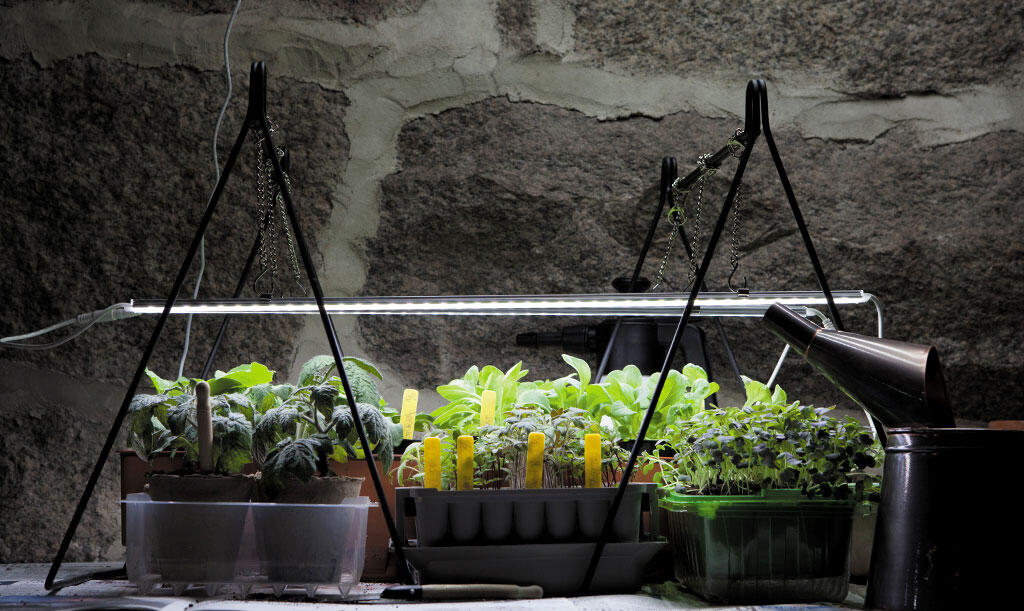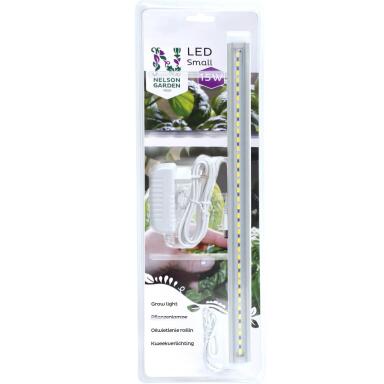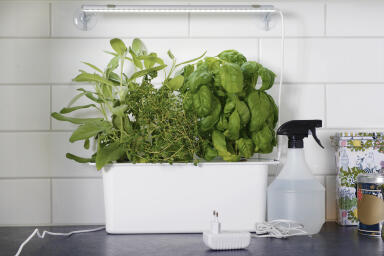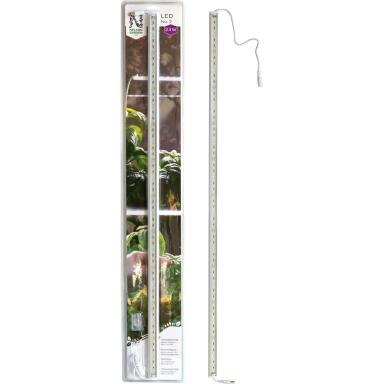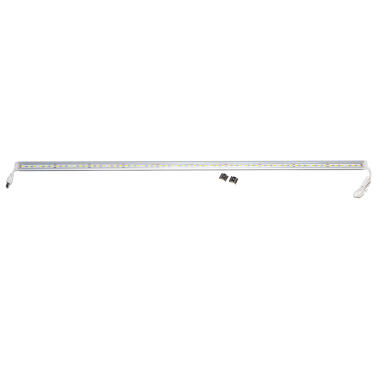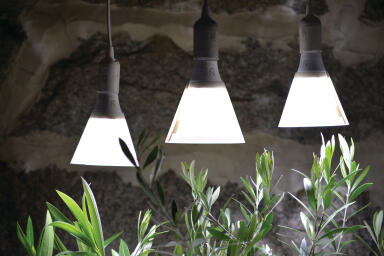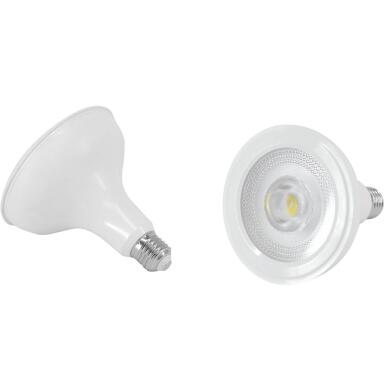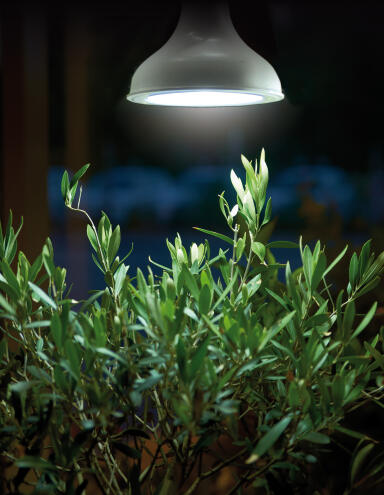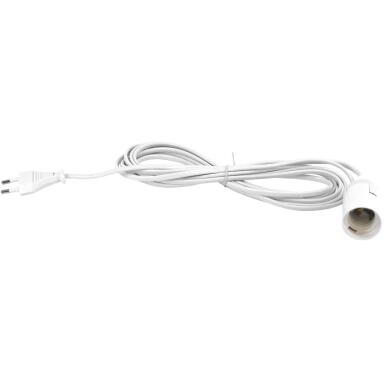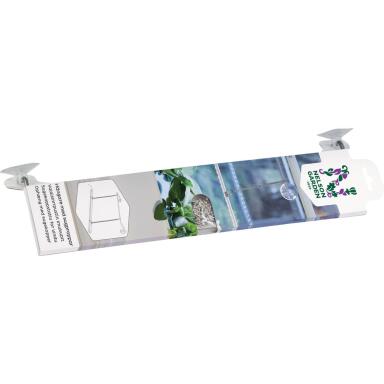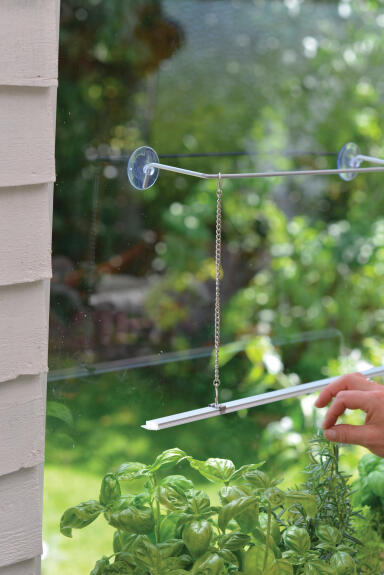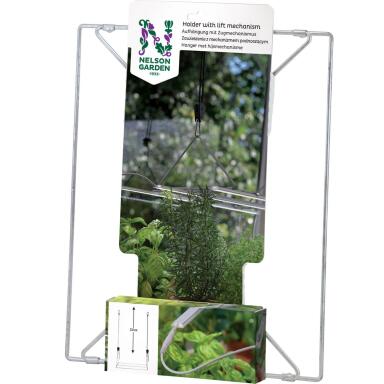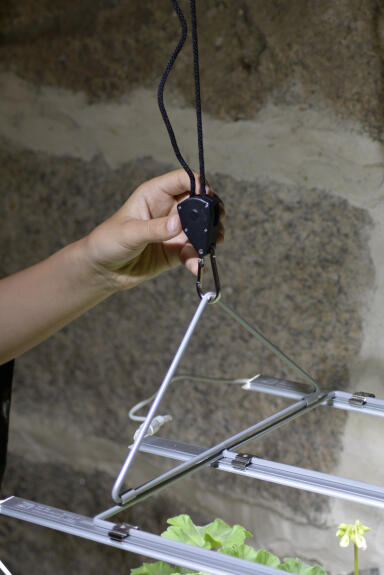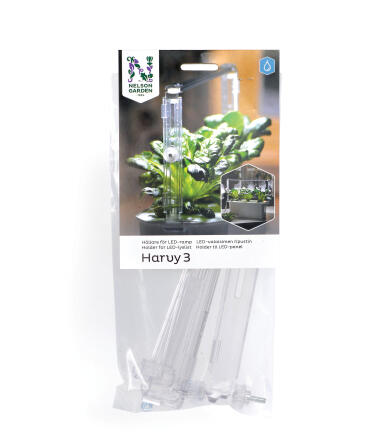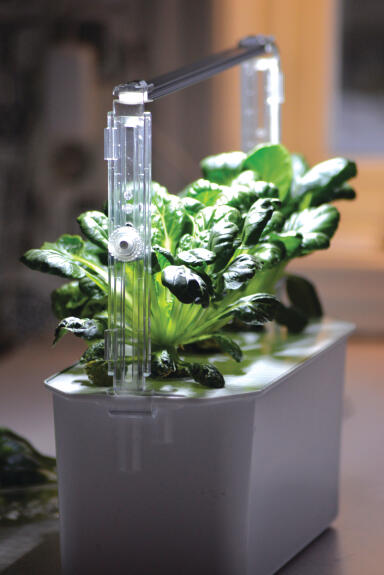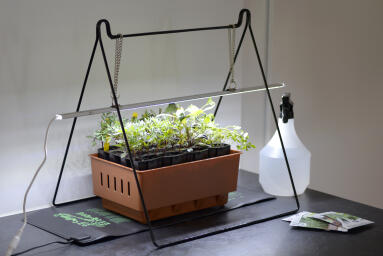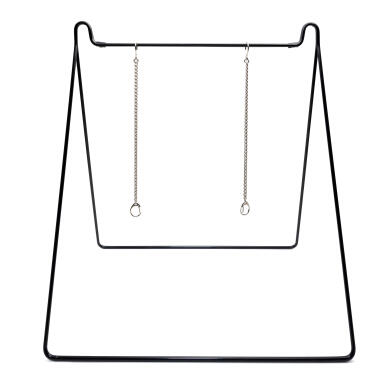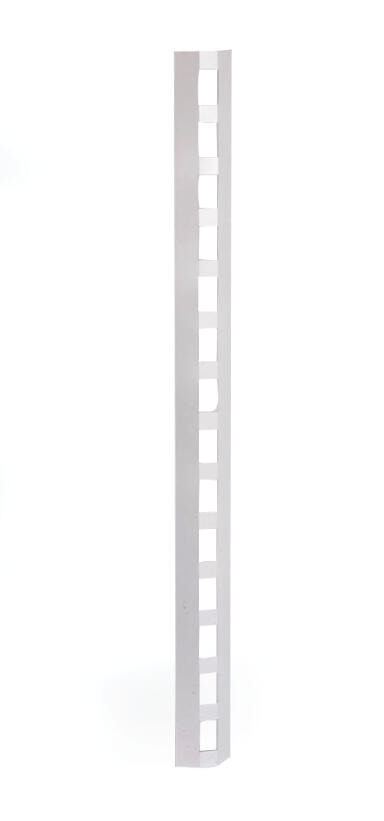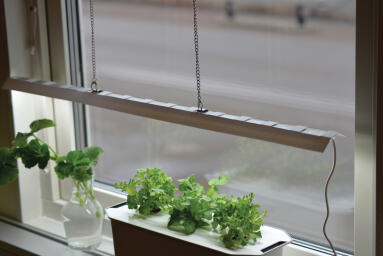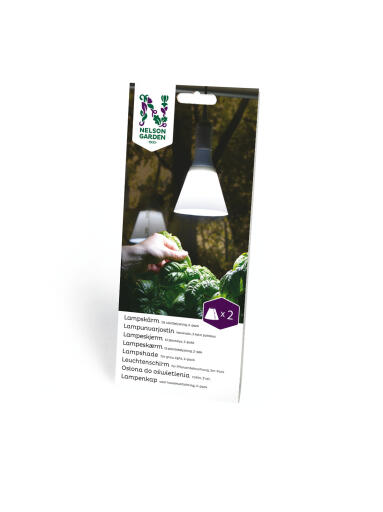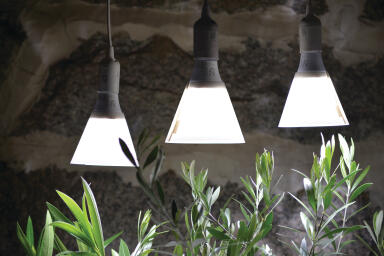Free returns
Quick delivery
Established 1933
Beginners guide to grow lights
22 November 2022The key to successful cultivation is light. Of course, you need good quality soil, seeds that can germinate and also make sure they get enough water and nutrients. However, light is essential for your plants to be healthy and thriving. Here's how to find out when it's time to turn on extra plant lighting and how to choose the best lighting.
With plant lighting, you can grow much more all year round. You can also grow in many more places than your windowsill. You can also grow several kinds of plants that need to start earlier. This is especially true for plants that originate from warmer climates.
When is plant lighting needed?
Natural daylight is always preferable, both for seedlings and for mature plants. During the period October to March, slightly longer if you live in the north, daylight is not strong enough or available for long enough. Extra plant lighting is therefore necessary to provide your plants with sufficient light during the winter months.
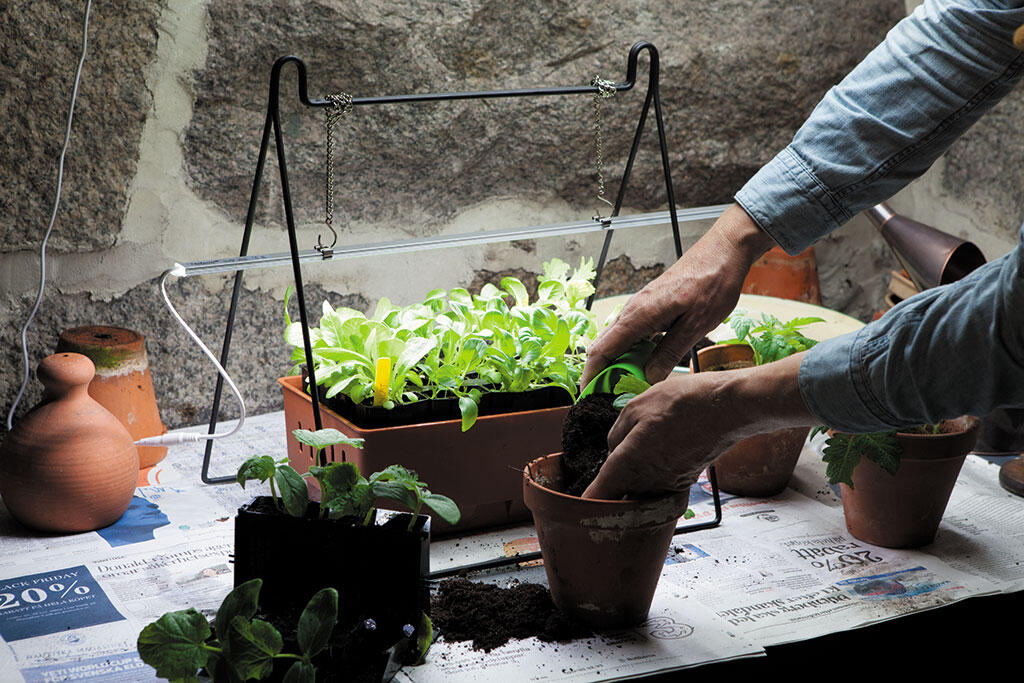
With plant lighting, you can plant your seedlings both earlier and on a larger scale. You are not dependent on the window or the season. Photo: Annika Christensen
Plant lighting for root growth
Many of the vegetables we grow originate from warmer climates where the length of the day is much longer throughout the year. Although these plants thrive in our area during the summer months, the season is far too short for the fruit to ripen. So, these varieties need to be grown early to produce ready-to-harvest fruit before autumn arrives.
Chillies, peppers, aubergines, physalis and artichokes are a good idea to grow under grow lights. Flowers such as geraniums and giant verbena also need to be sown early if they are to flower.
The light is needed to get nice, strong plants. When we sow early in the year, daylight is limited. Too little light will usually result in your seedlings being far too weak. In sheer desperation, they take to the heights in search of the light they instinctively know is coming from above.
Should I sow all my seeds in the middle of winter?
In principle, you can do this and plant your seedlings at any time of the year. With proper lighting, you should also be able to have ripe tomatoes in January. Before you plant your seeds, you should think about where you intend to keep your plants once they have grown bigger. If you want a tomato plant out on the balcony or in the garden, there's no need to sow too early. The risk is that you'll end up with full-grown plants that you can't yet put outside.
Some varieties, such as cucumbers, don't like to stay too long in the heat. Despite the light, they can grow long and untidy. Planting out overly large plants that have already established proper root systems is a little riskier than planting out while they are still quite small.
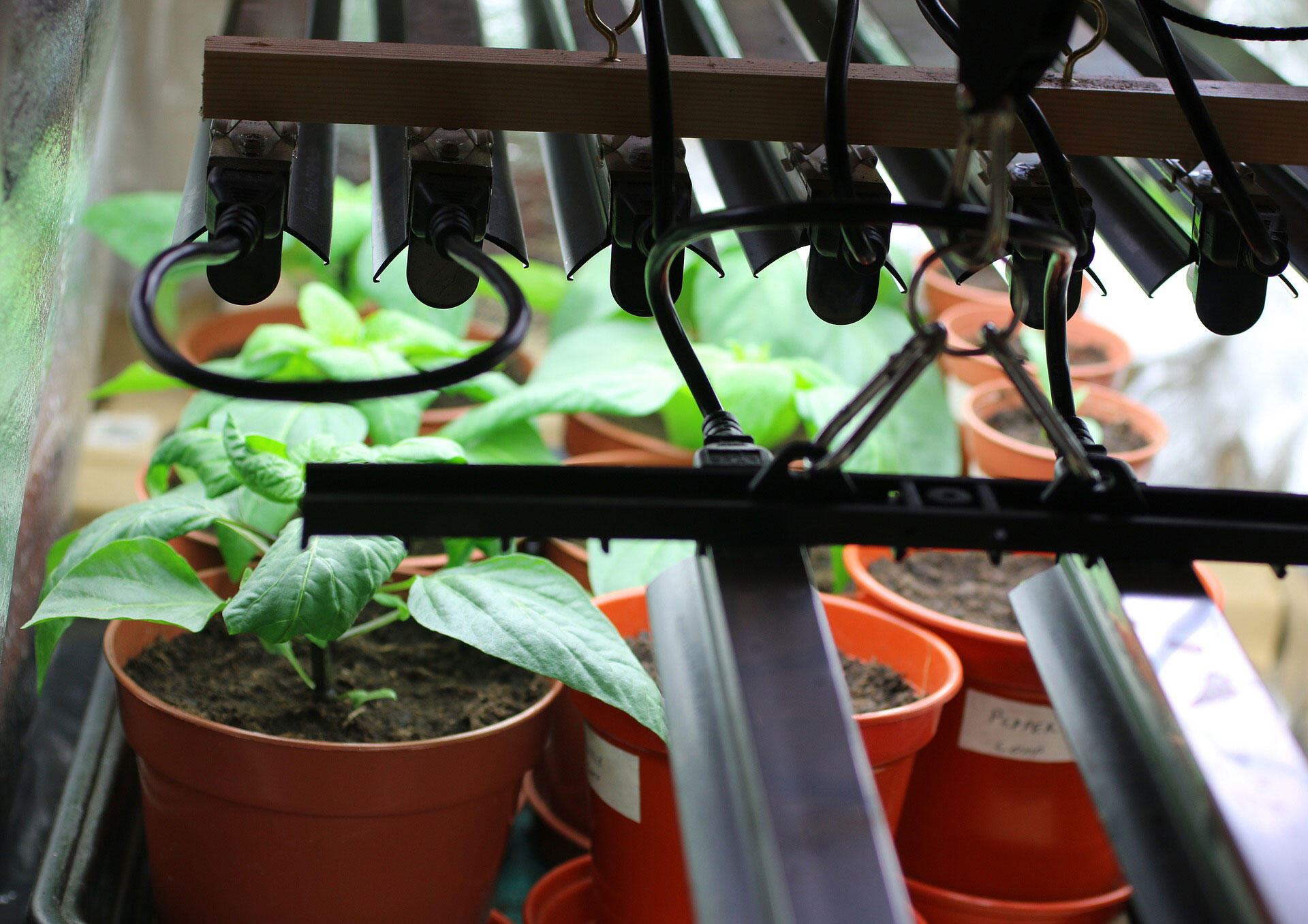
Several chilli varieties need to be sown in the middle of winter to ripen before summer is over.
Plant lighting for mature plants
When autumn darkness comes, it is quite likely that you still have some unripe fruit left on your plants. Tomatoes will ripen nicely on their own even if you have harvested them. Chillies, on the other hand, can be a bit finicky. Bring your favourite plants indoors when it gets too cold and give them extra light with plant lighting. The chillies will ripen faster.
Plant lighting for the winter and extra light
Geraniums, chilli plants as well as Mediterranean plants such as citrus and olive trees often get a bit brittle in the dark of winter. These plants are best stored in cool, bright conditions.
Even your potted plants on the windowsill tend to cope with winter much better if they get extra light. The little light that comes through the window is not enough for the plants' photosynthesis to function optimally.
Should I water my overwintered plants?
Although your plants will go into a lighter dormancy period during the winter, they may need both water and nutrients to keep their green leaves. Water very sparingly and reduce the amount of nutrients, but make sure the pot never dries out completely. The warmer they are, the more light, water and nutrients they need.
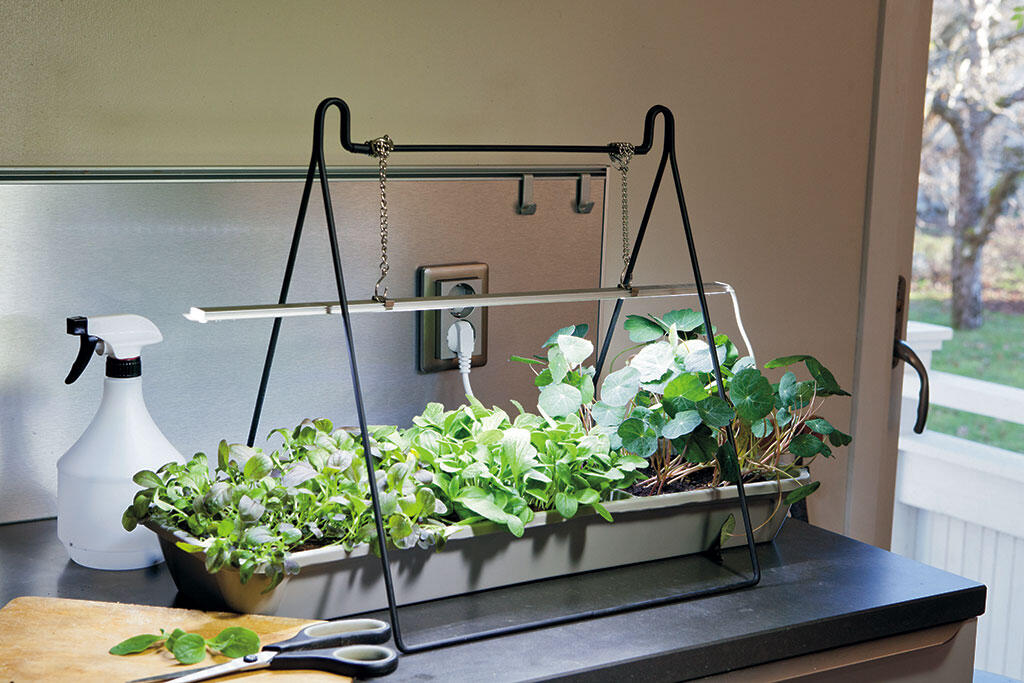
If you want to harvest spicy micro-leaves from your kitchen counter in winter, plant lighting is a good idea. The further into the kitchen your crop is, the harder it is for the little daylight to reach in. Photo: Annika Christensen
Plant lighting for year-round harvesting
With plant lighting, you can keep your own vegetable crop going all year round. Green leaves and herbs in particular work well and are worth growing. They grow quickly, are best freshly harvested and require little soil. You don't need big pots with lots of heavy soil.
How do I choose plant lighting?
We know that natural light is not enough during winter. Does it matter which light you hang over your seedlings and overwintered plants? Let's take a closer look at what lighting you should choose and how to use it.
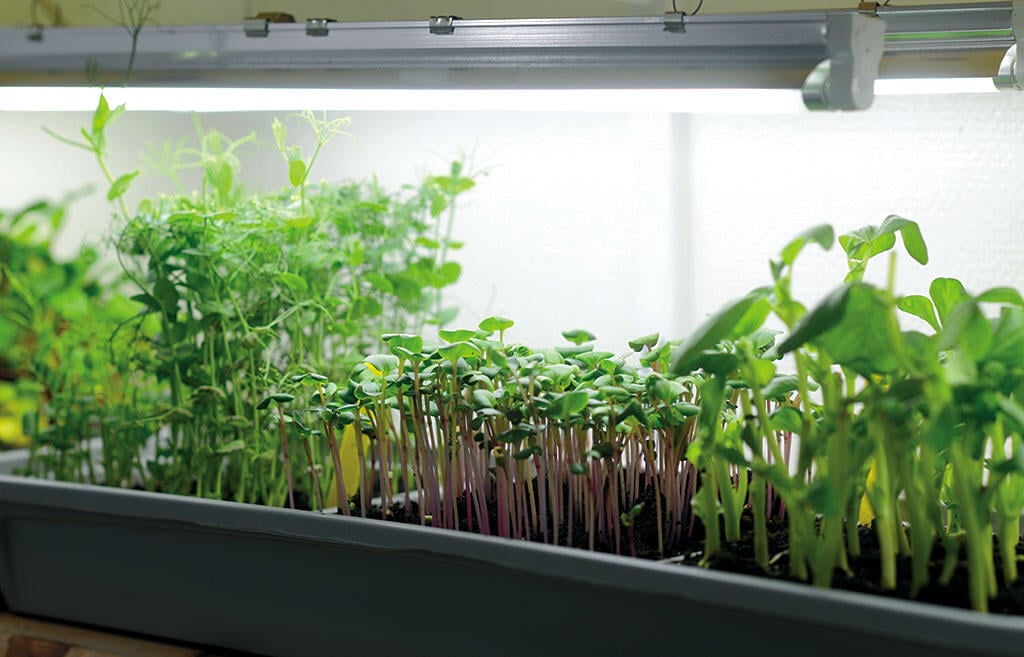
Grow micro-leaves and harvest home-grown vegetables all winter long. Photo: Markus Danielsson
Type of lamp and position of light
Since natural daylight is the best, your plant lighting should be able to mimic it as much as possible. An ordinary light bulb, which is rarely sold anymore, is not enough. Because the bulb emits a lot of heat, it needs to hang some distance away from the plant and the light will be too weak, causing it to be a waste of energy.
To use your plant lighting efficiently, it should shine close to and be directed towards the plant. The aim is for as much of the light as possible to hit and be absorbed by the foliage of the plants. Today's LED lamps emit relatively little heat compared to the filament lamps of the past and can therefore be placed close to the plant. It is then useful to be able to adjust the height of the lamp or fluorescent tube itself. Around 10-15 cm is usually adequate.
The choice between a light frame/tube or a spotlight depends mainly on the area covered by your cultivation and the possibilities for attaching the lighting.
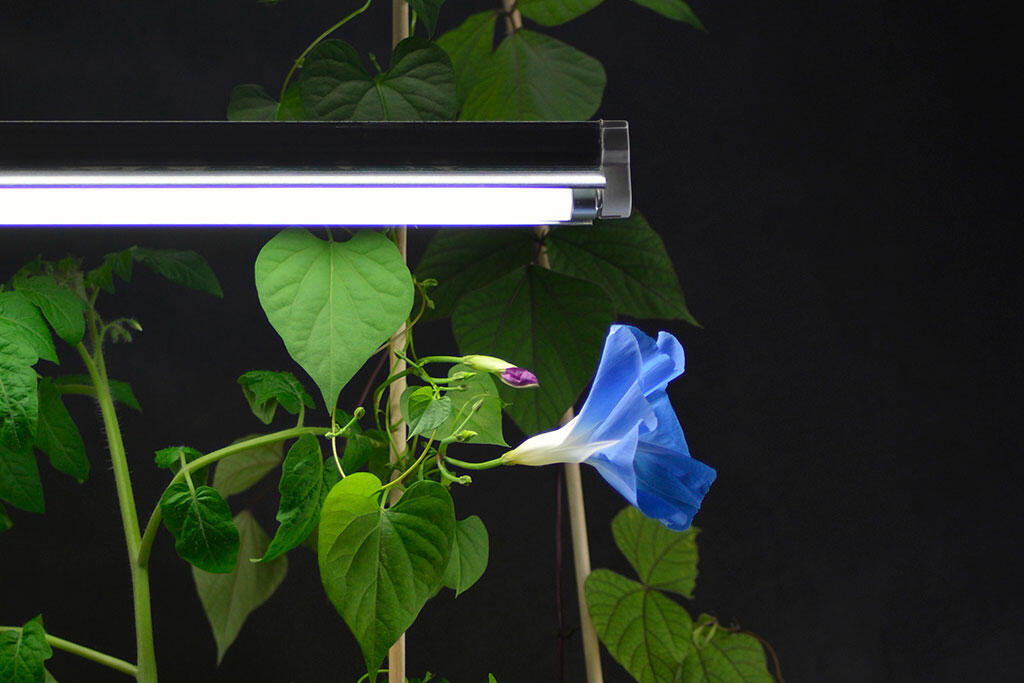
Choose a lamp and position it so that as much of the light hits as much of the plant as possible. Photo: Markus Danielsson
When should the light be on?
The most important thing for your plant is how much light it gets per day. The brighter the light, the shorter the period the lamp needs to be on. The dimmer the light, the longer it should stay on. It's not necessarily the case that more light means better growth; the plant also needs a chance to recover.
For the hobby grower, it is not necessary to calculate how long your lighting needs to be on. A good guideline would be that plants wintering indoors need at least 8-10 hours of light, preferably more. For seedlings and cuttings, 12-16 hours is usually considered adequate. It is therefore a good idea to connect a timer to your plant lighting. If your plants are in a window with good daylight, it's also a good idea to leave it off for a while in the middle of the day. That way, you're protecting both the environment and your wallet.
The relationship between light and heat
Many seeds need heat to germinate. Room temperature is usually enough, but for extra speed, a heating mat can be used. However, once the plant has grown, it will thrive better in cooler temperatures, perhaps even cooler than what you consider a comfortable indoor temperature. The basic principle is that the warmer the plant, the more light it needs to avoid becoming unruly.
How do we measure light?
When you stand in a garden centre and compare lighting for growing, you will see that some measurements differ. Light can be measured in many ways, and it is a jungle to get through all the values on the packaging. No information is inherently unnecessary, but what is relevant to you will depend on what you use the information for.
Micromoles (μmol) per square metre per second is the best measure of how suitable a light is for plants. It indicates how much light hits a given area of the plant every second. The number of μmoles per square metre per second that a lamp provides therefore depends on the distance between the lamp and the plant, not just the capacity of the lamp.
Lumen indicates the total light output of your lighting - in all directions. Lux, in turn, indicates the intensity of the light, i.e. lumens per square metre. These units are adapted to the sensitivity of the human eye. Therefore, they do not measure the balance and intensity of the light to which plants respond most.
Kelvin (K) indicates the colour temperature and is also a measure adapted to the light we see with our eyes. A high value tends towards bluish tones while a low value produces reddish ones. In general, however, it can be said that a higher degree is better suited for plant lighting.
Watts (W) have nothing to do with the light itself but measure how much electricity your lamp draws - that is, the power of the lamp. This means, a higher W light will draw more electricity. This may - but does not necessarily - mean that the plant lamp with the higher wattage produces more light.
Source: Bergstrand, Karl-Johan. 2015. Modern greenhouse lighting. ISBN: 978-9-576-8910-8
